Ditapis dengan
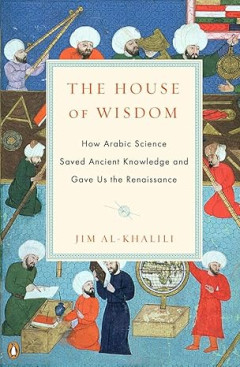
E-book The House of Wisdom: How Arabic Science Saved Ancient Knowledge and Ga…
A myth-shattering view of the Islamic world's myriad scientific innovations and the role they played in sparking the European Renaissance. Many of the innovations that we think of as hallmarks of Western science had their roots in the Arab world of the middle ages, a period when much of Western Christendom lay in intellectual darkness. Jim al- Khalili, a leading British-Iraqi physicist, resurr…
- Edisi
- -
- ISBN/ISSN
- 9780143120568
- Deskripsi Fisik
- 426 halaman, ilus.
- Judul Seri
- -
- No. Panggil
- 509.2 KHA t
E-book Eskalation : G20 in Hamburg, Protest und Gewalt
Am 7. und 8. Juli 2017 versammelten sich in den Hamburger Messehallen Vertreter*innen der reichsten Länder der Welt für das Treffen der Gruppe der 20. Verschiedene Bündnisse und Initiativen riefen zu Protesten gegen das Treffen auf. Organisiert wurde ein vielfältiges Repertoire an Protest-aktionen, das von einem Gegengipfel und Protestcamps über Performan-ces, …
- Edisi
- -
- ISBN/ISSN
- 9783868543735
- Deskripsi Fisik
- 290 hlm
- Judul Seri
- -
- No. Panggil
- 320 MAL e
E-book Do Exclusionary Rules Ensure a Fair Trial? : A Comparative Perspective…
Criminal justice systems are barometers of social development. This claim, putforward by German criminal law scholars,1alludes to the fact that inherent in thecriminal justice process are conflicting interests between the need to ensure comprehensive fact-finding on the one hand, and the wish to safeguard individual rights,especially those of defendants, on the other hand. In all criminal justi…
- Edisi
- -
- ISBN/ISSN
- 9783030125202
- Deskripsi Fisik
- 387 hlm
- Judul Seri
- -
- No. Panggil
- 320 CHE d
E-book Wallerstein 2.0 : Thinking and Applying World-Systems Theory in the 21…
Immanuel Wallerstein is often named“the master of the field”2when scholarsdiscuss world-systems theory, and while there are others whose works pavedthe way for this kind of analysis,3it is true that the former had a prominentposition within the field he helped to create. Wallerstein, however, would notonly be perceived as a “worldwide renowned and influential sociologist andeconomic histo…
- Edisi
- -
- ISBN/ISSN
- 9783839460443
- Deskripsi Fisik
- 181 hlm
- Judul Seri
- -
- No. Panggil
- 300.1 BAS w
E-book Data Power : Radical Geographies of Control and Resistance
One step after another, each recorded and located by the Global Position-ing System (GPS) and shared with the world. Sequential steps repeated daily in our morning run or commute become part of an economic cycle of digital tracking, extracting our location data and serving parts back to us as directions, as ads, as insurance rates. And also as egregious privacy violations which set …
- Edisi
- -
- ISBN/ISSN
- 9781786805560
- Deskripsi Fisik
- 177 hlm
- Judul Seri
- -
- No. Panggil
- 004 THA d

E-book As If Already Free: Anthropology and Activism After David Graeber
A highly original thinker' - New York Times David Graeber (1961–2020) was an American anthropologist and anarchist activist, who left us with new ways to understand humankind. This collection of new writing brings together his insights into one book, showing how deeply his work continues to influence us today. Graeber’s writing resonates with both scholars and activists looking to shake thi…
- Edisi
- -
- ISBN/ISSN
- 9780745348452
- Deskripsi Fisik
- 241 halaman
- Judul Seri
- -
- No. Panggil
- 320 HIG a
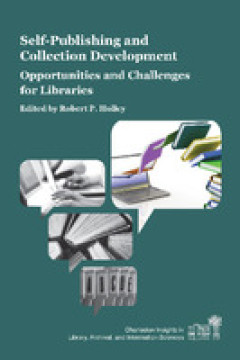
E-book Self-Publishing and Collection Development: Opportunities and Challeng…
The current publishing environment has experienced a drastic change in the way content is created, delivered, and acquired, particularly for libraries. With the increasing importance of digital publishing, more than half the titles published in the United States are self-published. With this growth in self-published materials, librarians, publishers, and vendors have been forced to rethink chan…
- Edisi
- -
- ISBN/ISSN
- 9781557539687
- Deskripsi Fisik
- 198 halaman
- Judul Seri
- -
- No. Panggil
- 020 HOL s
E-book Making Sense of the Arab State
For scholars of the Arab world, the state remains an elusive, unsettled, and unsettling presence. Since mandatory and then independent states emerged in the Arab world in the aftermath of World War I, theorizing the Arab state has been a central preoccupation for generations of regional specialists. The gravitational pull of the state is not surprising. As a pr…
- Edisi
- -
- ISBN/ISSN
- 9780472904617
- Deskripsi Fisik
- 309 hlm
- Judul Seri
- -
- No. Panggil
- 320 AND m
E-book The China Alternative : Changing Regional Order in the Pacific Islands
The Pacific Islands region has entered a new period of uncertainty precipitated in large part by the emergence of China as a major regional actor as well as the reaction of more established powers to perceived threats to their longstanding influence. In March 2019, in the wake of a flurry of activity on the part of Australia, New Zealand and the United States …
- Edisi
- -
- ISBN/ISSN
- 9781760464172
- Deskripsi Fisik
- 520 hlm
- Judul Seri
- -
- No. Panggil
- 320 AQO t

E-book The Last Man Who Knew Everything
No one has given the polymath Thomas Young (1773–1829) the all-round examination he so richly deserves—until now. Celebrated biographer Andrew Robinson portrays a man who solved mystery after mystery in the face of ridicule and rejection, and never sought fame. As a physicist, Young challenged the theories of Isaac Newton and proved that light is a wave. As a physician, he showed how the ey…
- Edisi
- -
- ISBN/ISSN
- 9781805110187
- Deskripsi Fisik
- 298 halaman, ilus.
- Judul Seri
- -
- No. Panggil
- 920.71 ROB t

E-book The Chemistry Book: From Gunpowder to Graphene, 250 Milestones in the …
From atoms and fluorescent pigments to sulfa drug synthesis and buckyballs, this lush and authoritative chronology presents 250 milestones in the world of chemistry. As the "central science" that bridges biology and physics, chemistry plays an important role in countless medical and technological advances. Covering entertaining stories and unexpected applications, chemist and journalist Derek B…
- Edisi
- -
- ISBN/ISSN
- 9781454917281
- Deskripsi Fisik
- 811 halaman, ilus.
- Judul Seri
- -
- No. Panggil
- 540 LOW t
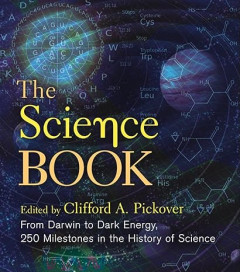
E-book The Science Book: From Darwin to Dark Energy, 250 Milestones in the Hi…
From astronomy to psychology, this beautifully illustrated chronology presents the most important and groundbreaking milestones in science. Award-winning author Cliff Pickover (The Math Book, The Physics Book, and The Medical Book) gathers into one fully illustrated volume the most important thinkers and ideas in the history of science. This unique omnibus edition includes 250 thoughtfu…
- Edisi
- -
- ISBN/ISSN
- 9781454933007
- Deskripsi Fisik
- 779 halaman, ilus.
- Judul Seri
- -
- No. Panggil
- 500.0 PIC t
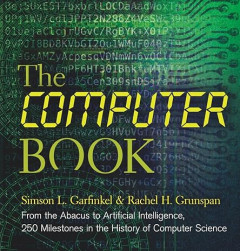
E-book The Computer Book: From the Abacus to Artificial Intelligence, 250 Mil…
With 250 illustrated landmark inventions, publications, and events—encompassing everything from ancient record-keeping devices to the latest computing technologies—this highly topical addition to the Sterling Milestones series takes a chronological journey through the history and future of computer science. Two expert authors, with decades’ of experience working in computer research and i…
- Edisi
- -
- ISBN/ISSN
- 9781454926221
- Deskripsi Fisik
- 586 halaman, ilus.
- Judul Seri
- -
- No. Panggil
- 004.03 GAR t
E-book China Dreams
According to legend, the Jade Emperor called all twelve celestial animals to his palace to assign them their place in the zodiac. The Pig, a lazy if intelligent creature, was still in dreamland when the other eleven turned up to claim their places. He ended up last. And so 2019, the eventful Year of the Pig (coincidentally also marked by swine fever and a severe pork supply shor…
- Edisi
- -
- ISBN/ISSN
- 9781760463748
- Deskripsi Fisik
- 328 hlm
- Judul Seri
- -
- No. Panggil
- 320 GOL c
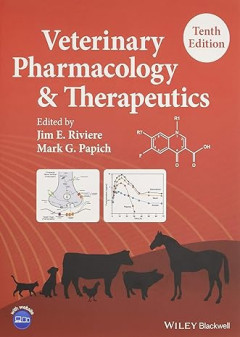
E-book Veterinary Pharmacology and Therapeutics
eterinary Pharmacology and Therapeutics, Tenth Edition is a fully updated and revised version of the gold-standard reference on the use of drug therapy in all major veterinary species. Provides current, detailed information on using drug therapies in all major domestic animal species Organized logically by drug class and treatment indication, with exhaustive information on the rational us…
- Edisi
- -
- ISBN/ISSN
- 9781118855881
- Deskripsi Fisik
- 1550 halaman, ilus.
- Judul Seri
- -
- No. Panggil
- 636.089 RIV v
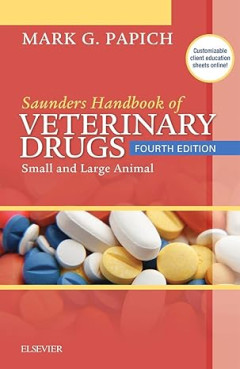
E-book Saunders Handbook of Veterinary Drugs: Small and Large Animal, 4th Edi…
Saunders Handbook of Veterinary Drugs, 4th Edition includes entries for 550 drugs, with convenient appendices summarizing clinically relevant information at a glance. New to this edition are 25 new drug monographs and easy access to drug content on any mobile device. Written by clinical pharmacology expert Mark Papich, this handy reference includes a companion website containing more than 150 c…
- Edisi
- Edisi 4
- ISBN/ISSN
- 9780323244855
- Deskripsi Fisik
- 932 halaman, ilus.
- Judul Seri
- -
- No. Panggil
- 636.089 PAP s

E-book The Responsibility of Science
This open access book provides an overview of issues of scientific responsibility. The volume comprises three types of contributions: first, analyses of the responsibility of science; second, analyses of the structural conditions for science and its responsibility; and third, normative versions of scientific responsibility. The questions and problems dealt with include science as a profession, …
- Edisi
- -
- ISBN/ISSN
- 9783030915971
- Deskripsi Fisik
- 258 halaman
- Judul Seri
- -
- No. Panggil
- 101 MIE t
E-book International Aid and Urban Change : Humanitarian Presence in Bamako, …
This work is the result of research started in 2014, on the processes of urban transformations in Bamako Juba, Nairobi and Abidjan in relation to the pres-ence and security policies of UN missions and international aid. The results of this research highlight an uneven process of territoriality where humanitarian organisations operate.The focus of this work or…
- Edisi
- -
- ISBN/ISSN
- 9783034345620
- Deskripsi Fisik
- 366 hlm
- Judul Seri
- -
- No. Panggil
- 320 DER i
E-book A Matter of Trust : Building Integrity into Data, Statistics and Recor…
The Sustainable Development Goals (SDGs) initiative has the potential to set the direction for a future world that works for everyone. The SDGs were approved by 193 United Nations member countries in September 2016 to help guide global and national development policies in the period to 2030. The 17 goals build on the successes of the Millennium Development Goals, while also includin…
- Edisi
- -
- ISBN/ISSN
- 9781912250356
- Deskripsi Fisik
- 269 hlm
- Judul Seri
- -
- No. Panggil
- 300.285 AMB a
E-book Come Hell or High Fever : Readying the World's Megacities for Disaster
Haruki Akamatsu had not felt the ocean crust heave 10 metres upward. He was not there to see the 6-metre tsunami surge inland, drowning thousands and clawing the earth bare with its retreat. He had, however, clutched the carpet beneath his desk as the twenty-first-floor office in Tokyo swayed sickeningly, thinking the worst was over when the swaying stopped. It was not, b…
- Edisi
- -
- ISBN/ISSN
- 9781760465544
- Deskripsi Fisik
- 499 hlm
- Judul Seri
- -
- No. Panggil
- 320 GLE c
E-book Altmetrics for Digital Libraries : Concepts, Applications, Evaluation,…
The continuing adoption of technology (i.e., computers, cell phones,and information systems) and the associated large-scale growth of information haveled to the “big data” movement (Diebold, 2012; Mayer-Schönberger & Cukier, 2013), where “big data” refers to the large volume of information that no longer fits in the memory that modern computers use for process…
- Edisi
- -
- ISBN/ISSN
- 9783832553098
- Deskripsi Fisik
- 292 hlm
- Judul Seri
- -
- No. Panggil
- 004.071 NUR a

E-book Environmental Governance in Indonesia
This open access book presents the state-of-the-art environmental governance research and practices in Indonesia. It offers a wide scope, covering different sectors (e.g., forestry, mining) and geographical landscapes (e.g., inland and coastal areas). This book engages with existing theories and frameworks, including Earth System Governance, Adaptive and Interactive Governance, among others to …
- Edisi
- -
- ISBN/ISSN
- 9783031159046
- Deskripsi Fisik
- 513 halaman
- Judul Seri
- -
- No. Panggil
- 320 TRI e
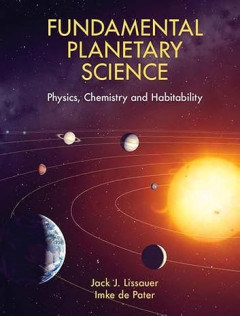
E-book Fundamental Planetary Science: Physics, Chemistry and Habitability
A quantitative introduction to the Solar System and planetary systems science for advanced undergraduate students, this engaging new textbook explains the wide variety of physical, chemical, and geological processes that govern the motions and properties of planets. The authors provide an overview of our current knowledge and discuss some of the unanswered questions at the forefront of research…
- Edisi
- -
- ISBN/ISSN
- 9780521618557
- Deskripsi Fisik
- 634 halaman
- Judul Seri
- -
- No. Panggil
- 523.2 LIS f
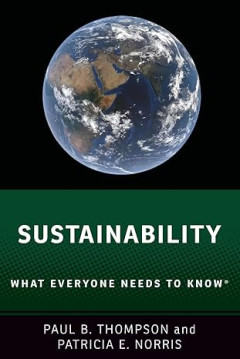
E-book Sustainability: What Everyone Needs to Know®
While politicians, entrepreneurs, and even school children could tell you that sustainability is an important and nearly universal value, many of them, and many of us, may struggle to define the term, let alone trace its history. What is sustainability? Is it always about the environment? What science do we need to fully grasp what it requires? What does sustainability mean for business? How ca…
- Edisi
- -
- ISBN/ISSN
- 9780190883232
- Deskripsi Fisik
- 273 halaman
- Judul Seri
- -
- No. Panggil
- 333.7 THO s

E-book Information: A Very Short Introduction
We live in a society that is awash with information, but few of us really understand what information is. In this Very Short Introduction, one of the world's leading authorities on the philosophy of information and on information ethics, Luciano Floridi, offers an illuminating exploration of information as it relates to both philosophy and science. He discusses the roots of the concept of infor…
- Edisi
- -
- ISBN/ISSN
- 9780199551378
- Deskripsi Fisik
- 130 halaman
- Judul Seri
- -
- No. Panggil
- 020 FLO i
E-book The Practice of Sheep Veterinary Medicine
There is a general perception amongst veterinary students and sheep producers that there are limited opportunities for a ‘sheep vet’ because individual sheep are generally of low value and the cost of veterinary involvement is too high. It is quite true that the value of individual sheep in commercial flocks is generally too low for sheep diseases with a low incidence to attr…
- Edisi
- -
- ISBN/ISSN
- 9781925261783
- Deskripsi Fisik
- 614 hlm
- Judul Seri
- -
- No. Panggil
- 636.089 ABB t

E-book Baby Ninth Amendments : How Americans Embraced Unenumerated Rights and…
Take an average American. We will call her “Jane.” Think about what she may have done yesterday.Jane rose at a time best suited to her schedule for the day so she could walk her dog, get the kids breakfast and off to school, or get to work. Or maybe she was lucky enough to sleep in.She ate a breakfast that conformed to her cravings, or health needs, or budget.She got ready, choosing clothes…
- Edisi
- -
- ISBN/ISSN
- 9780472903498
- Deskripsi Fisik
- 215 hlm
- Judul Seri
- -
- No. Panggil
- 320 SAN b
E-book La casa de Platón : Filosofía lúdica de la historia = Rumah Plato :…
Como todo ser humano, no puedo suponer, sino que soy parte de una conciencia cósmica y, en este sentido, debería decir que soy seguidor de lo que se ha llamado “panpsiquismo”, el cual tendría antecedentes en el pensamiento, que ya viene de Aristóteles (“todo es alma”) y antes todavía, de Heráclito de un logos cósmico universal. A su vez, este último se reca-pitularí…
- Edisi
- -
- ISBN/ISSN
- 9789566095699
- Deskripsi Fisik
- 344 hlm
- Judul Seri
- -
- No. Panggil
- 300.1 HOL l
E-book What Photographs Do: The Making and Remaking of Museum Cultures
What are photographs ‘doing’ in museums? Why are some photographs valued and others not? Why are some photographic practices visible and not others? What value systems and hierarchies do they reflect? What Photographs Do explores how museums are defined through their photographic practices. It focuses not on formal collections of photographs as accessioned objects, be they ‘fine art’ or…
- Edisi
- -
- ISBN/ISSN
- 9781800082984
- Deskripsi Fisik
- 357 hlm
- Judul Seri
- -
- No. Panggil
- 069 EDW w

E-book Warping Time : How Contending Political Forces Manipulate the Past, Pr…
In a 2017 speech, Virginia governor Terry McAuliffe declared that the Confederate monuments should be removed because they helped to keep racism alive in present-day institutions and attitudes. President Donald Trump, for his part, argued that those attempting to remove the monu-ments were seeking to rewrite history in order to remove all traces of ideas with whi…
- Edisi
- -
- ISBN/ISSN
- 9780472903344
- Deskripsi Fisik
- 159 hlm
- Judul Seri
- -
- No. Panggil
- 320 GIN w

E-book Deforming the Reform : The Impact of Elites on Romania’s Post-access…
On 1 January 2007, Romania became a full member of the European Union. Thestatethat joined the EU was already since 1991 a constitutional republic with abicameral Parliament elected by popular vote and with a dual executive formed by adirectly elected president and an appointed prime minister. In the lead-up to itsaccession, Romania had to amend and adopt numerous laws in order to bring themint…
- Edisi
- -
- ISBN/ISSN
- 9783031110818
- Deskripsi Fisik
- 224 hlm
- Judul Seri
- -
- No. Panggil
- 320 MAR d
E-book Enhanced Living Environments : Algorithms, Architectures, Platforms, a…
Enhanced and Assisted living environments (ELE/ALE) have been in focus ofthe researches for more than decade [8]. Adaptation of novel technologies inhealthcare has taken a slow but steady pace, from the first wearable sensors forchronic disease conditions and activity detection with offline processing towardsimplantable or non-invasive sensors supported by advanced data analytics forpervasive a…
- Edisi
- -
- ISBN/ISSN
- 9783030107529
- Deskripsi Fisik
- 339 hlm
- Judul Seri
- -
- No. Panggil
- 004.071 ACH e

E-book After the Coup: Myanmar's Political and Humanitarian Crises
The coup in Myanmar on 1 February 2021 abruptly reversed a decade-long flirtation with economic and political freedoms. The country has since descended into civil war, the people have been plunged back into conflict and poverty, and the state is again characterised by fragility and human insecurity. As the Myanmar people oppose the regime and fight for their rights, the international community …
- Edisi
- -
- ISBN/ISSN
- 9781760466145
- Deskripsi Fisik
- 348 halaman
- Judul Seri
- -
- No. Panggil
- 320 SKI a
E-book Mobilizing the Metropolis : How the Port Authority Built New York
A remarkable structure sits on the west side of Manhattan. Although 111 Eighth Avenue is only eighteen floors high, it consumes an entire massive New York City block and was built with big things in mind. The building (see fig. 1.1), which contains 50 percent more square feet than the Empire State Building, was designed with elevators so large …
- Edisi
- -
- ISBN/ISSN
- 9780472903481
- Deskripsi Fisik
- 387 hlm
- Judul Seri
- -
- No. Panggil
- 320 PLO m
E-book Diversity in Computer Science : Design Artefacts for Equity and Inclusion
ll the research we present in this book took place in the Department of Computer Science at the University of Copenhagen (Datalogisk Institut Københavns Universitet [DIKU]), in Denmark. Thus, our work is situated in Denmark, and since gender is culturally shaped (Butler 1999), providing some contextual information about the Computer Science Department is important. The Univer…
- Edisi
- -
- ISBN/ISSN
- 9783031133145
- Deskripsi Fisik
- 139 hlm
- Judul Seri
- -
- No. Panggil
- 004 BJO d
E-book Heritage Dynamics : Understanding and adapting to change in diverse he…
How is heritage created and re- created, shaped and reshaped, formed, reformed and transformed – or even reborn? Heritage in all its forms endures a lengthy and dynamic journey of emergence, transformation, decline and revival. An object displayed within a museum showcase may have travelled through various places and changed uses more than once before acquiri…
- Edisi
- -
- ISBN/ISSN
- 9781787358331
- Deskripsi Fisik
- 255 hlm
- Judul Seri
- -
- No. Panggil
- 069 FOU h
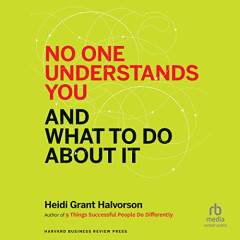
E-book No One Understands You and What to Do About It
Have you ever felt you're not getting through to the person you're talking to, or not coming across the way you intend? You're not alone. Most of us assume that other people see us as we see ourselves, and that they see us as we truly are. But neither is true. Our everyday interactions are colored by subtle biases that distort how others see us--and also shape our perceptions of them. You…
- Edisi
- -
- ISBN/ISSN
- 9781625274120
- Deskripsi Fisik
- 149 halaman
- Judul Seri
- -
- No. Panggil
- 300.72 HAL n
E-book Heritage Conservation and Social Engagement
Professionals working with cultural heritage preservation have had to respond to difficult challenges in the last few decades, mainly brought about by globalisation, armed conflicts, natural disasters and the use of heritage as an ultimate resource to redress injustices of the past. The topics and experiences discussed in this book demonstrate that conservators may …
- Edisi
- -
- ISBN/ISSN
- 9781787359208
- Deskripsi Fisik
- 199 hlm
- Judul Seri
- -
- No. Panggil
- 069 PET h
E-book Whatever Happened to Tory Liverpool? : Success, Decline and Irrelevanc…
In the municipal election of 1968, the Liverpool Conservatives won 62 per cent of the vote and 78 per cent of the seats on Liverpool City Council. Moreover, they had run Liverpool’s municipal government for 86 of the previous 100 years. In 1972 they lost control of the council. In 1983 they lost their last two MPs, and in 1998 they lost their final counci…
- Edisi
- -
- ISBN/ISSN
- 9781802078480
- Deskripsi Fisik
- 296 hlm
- Judul Seri
- -
- No. Panggil
- 320.41 JEF w
E-book Making the Palace Machine Work : Mobilizing People, Objects, and Natur…
The Qing, the last dynasty of the Chinese imperium, ruled for over 260 years (1644-1911). At the end of the 19th century it occupied a territory of roughly 13 million square kilometres and claimed sovereignty over more than 400 million people. One of the questions this book examines is how – on a sheer logistical level – was a complex empire of this size governed before the age of telegrams…
- Edisi
- -
- ISBN/ISSN
- 9789048553228
- Deskripsi Fisik
- 335 hlm
- Judul Seri
- -
- No. Panggil
- 069 AKC m
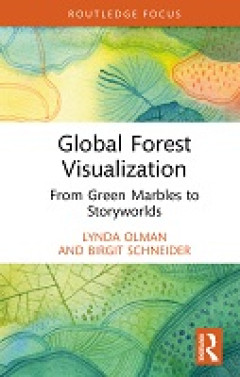
E-book Global Forest Visualization: From Green Marbles to Storyworlds
This book project examines global forest monitoring as a means to understand the promises and problems of global visualization for climate management. Specifically, the book focuses on Global Forest Watch, the most developed and widely available forest-monitoring platform, created in 1997 by the World Resource Institute. Forest maps are always political as they visualize power relations and for…
- Edisi
- -
- ISBN/ISSN
- 9781032454009
- Deskripsi Fisik
- 112 halaman
- Judul Seri
- -
- No. Panggil
- 577.55 OLM g
E-book How it Works: Book of Amazing Science, 2nd Edition
Science is the ultimate pursuit of knowledge, so with that in mind, read on to learn interesting new facts and open the doors in your mind that you didn't even know were there. Enjoy!
- Edisi
- -
- ISBN/ISSN
- -
- Deskripsi Fisik
- 164 halaman, ilus
- Judul Seri
- -
- No. Panggil
- 500.0 BES h
E-book 100 Jahre Politikwissenschaft in Hamburg : Bruchstücke zu einer Insti…
Als Siegfried Landshut im Februar 1950 zwei Gastvorträge im Hauptgebäude derUniversitätHamburghielt,kehrteererstmalsandenOrtzurück,vondemerknapp17 Jahre zuvor als Jude vertrieben worden war.1Zum Sommersemester 1951 erhielter dann den neu eingerichteten Lehrstuhl für die »Wissenschaft von der Politik«,einen der ersten seiner Art in der Bundesrepublik. An der Etablierung der Poli-tikwissen…
- Edisi
- -
- ISBN/ISSN
- 9783839453346
- Deskripsi Fisik
- 383 hlm
- Judul Seri
- -
- No. Panggil
- 320.43 NIE e
E-book Arctic Governance : Power in Cross-Border Cooperation
From the days of the Greek cartographers dreaming about Ultima Thule at the edges of the known world, the cold reaches of the northern hemi-sphere have inspired grandiose caricatures of risk and opportunity. The region is often imagined from a distance as sublime, exceptional and prone to extremes. Out of space and out of time, as Poe put it, the cir-cumpolar North is frequently …
- Edisi
- -
- ISBN/ISSN
- 9781526131645
- Deskripsi Fisik
- 178 hlm
- Judul Seri
- -
- No. Panggil
- 320 ROW a
E-book Debating the War in Ukraine : Counterfactual Histories and Future Poss…
In history, there are both periods of relative stability and critical nodal points, when specific turns of events and choices have an impact on which path the next phase of history will take (for the concept of nodal point, see Bhaskar 1986, 217 and Patomäki 2006, 9–18; for world-historical examples of counterfactual turning points, see Tetlock et al. 2006). A r…
- Edisi
- -
- ISBN/ISSN
- 9781003375326
- Deskripsi Fisik
- 111 hlm
- Judul Seri
- -
- No. Panggil
- 320 FOR d
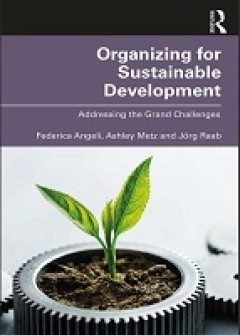
E-book Organizing for Sustainable Development: Addressing the Grand Challenges
The Sustainable Development Goals (SDGs) recognize the increasingly complex, interdependent nature of societal and environmental issues for governments and business. Tackling such "grand challenges" requires the concerted action of a multitude of organizations and multiple stakeholders at different levels in the public, private, and non-profit sector. Organizing for Sustainable Development prov…
- Edisi
- -
- ISBN/ISSN
- 9780429512889
- Deskripsi Fisik
- 299 halaman
- Judul Seri
- -
- No. Panggil
- 696 ANG o
E-book How It Works: Book of Amazing Technology, Volume 03-14
There is no doubt that technology in all its form has become an integral part of our lives. Yet very few of us understand exactly how it all works. However, volume 3 of the How It Works of Amazing Technology will educate and inform readers about some of the world's most innovative gadgets, impressive constructions and unbeliavable developments in artificial intelligence. With our in-depth guide…
- Edisi
- -
- ISBN/ISSN
- 9781910439234
- Deskripsi Fisik
- 180 halaman, ilus.
- Judul Seri
- -
- No. Panggil
- 603 ASA h
E-book Understanding Life Backward but Living Life Forward: Analyzing to Unde…
- Edisi
- -
- ISBN/ISSN
- -
- Deskripsi Fisik
- 546 halaman
- Judul Seri
- -
- No. Panggil
- 131 STA u
- Edisi
- -
- ISBN/ISSN
- -
- Deskripsi Fisik
- 546 halaman
- Judul Seri
- -
- No. Panggil
- 131 STA u

E-book The Nature of Physical Computation
Computing systems are everywhere today. Even the brain is thought to be a sort of computing system. But what does it mean to say that a given organ or system computes? What is it about laptops, smartphones, and nervous systems that they are deemed to compute, and why does it seldom occur to us to describe stomachs, hurricanes, rocks, or chairs that way? The book provides an extended argument fo…
- Edisi
- -
- ISBN/ISSN
- 9780197552384
- Deskripsi Fisik
- 319 halaman
- Judul Seri
- -
- No. Panggil
- 004 SHA t
E-book A Time Travel Dialogue
- Edisi
- -
- ISBN/ISSN
- 9781783740383
- Deskripsi Fisik
- 93 halaman
- Judul Seri
- -
- No. Panggil
- 501 CAR a
- Edisi
- -
- ISBN/ISSN
- 9781783740383
- Deskripsi Fisik
- 93 halaman
- Judul Seri
- -
- No. Panggil
- 501 CAR a
 Karya Umum
Karya Umum  Filsafat
Filsafat  Agama
Agama  Ilmu-ilmu Sosial
Ilmu-ilmu Sosial  Bahasa
Bahasa  Ilmu-ilmu Murni
Ilmu-ilmu Murni  Ilmu-ilmu Terapan
Ilmu-ilmu Terapan  Kesenian, Hiburan, dan Olahraga
Kesenian, Hiburan, dan Olahraga  Kesusastraan
Kesusastraan  Geografi dan Sejarah
Geografi dan Sejarah